56% of the crop is in good-to-excellent condition as of June 30
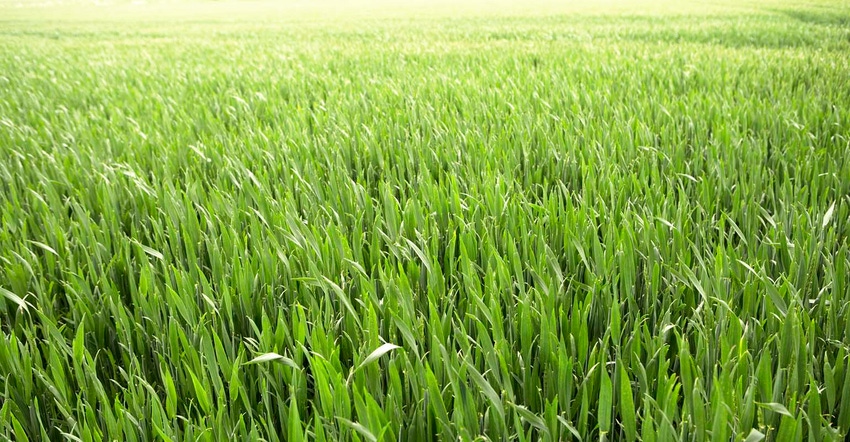
As the focus begins to turn from planting progress to crop condition, USDA held its corn quality ratings mostly steady in its latest round of crop progress data, out Monday afternoon.
The agency kept 56% of the U.S. corn crop rated good-to-excellent, but shifted the mix slightly, from 48%/8% last week to 47%/9% for the week ending June 30. Another 32% of the crop is rated fair, with the remaining 12% rated poor or very poor – all unchanged from the prior week.
“While the overall national rating reported by USDA improved, our analysis of state-by-state conditions declined, leaving with neither method showing a lot of variation,” according to Farm Futures senior grain market analyst Bryce Knorr. “The average shows a yield potential of about 169 bpa, about 7 bushel per acre below normal. Potential improved across most of the western Corn Belt but declined in the heart of the east, reflecting the overall tough condition of the crop there.”
Physiologically, 94% of the crop is emerged, which is up from 89% a week ago but unsurprisingly behind 2018’s pace and the five-year average, both at 100%.
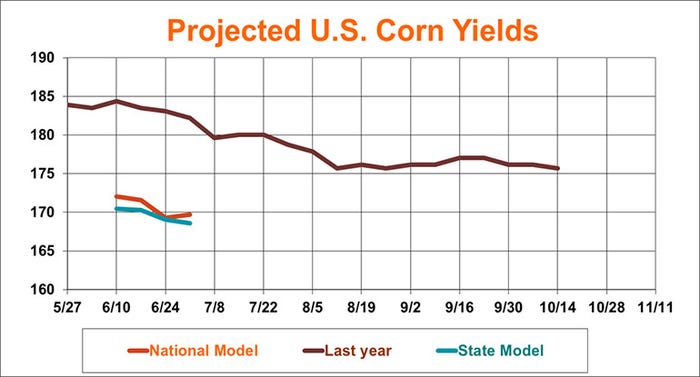
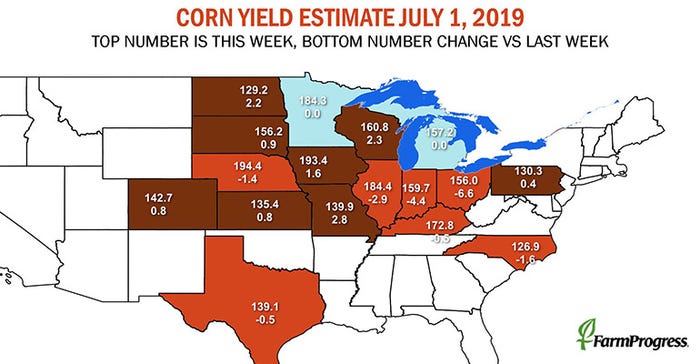
Soybean planting progress moved from 85% the week prior up to 92%. Analysts had expected progress to reach 93% this week, however. Michigan (81%), Missouri (79%) and Ohio (81%) still have the most acres left unplanted at this point.
Soybean emergence reached 83%, up from 71% the prior week but significantly behind 2018’s pace of 98% and the five-year average of 95%.
Soybean crop condition saw few changes this past week. Fifty-four percent was rated in good-to-excellent condition, unchanged from the prior week. Another 35% of the crop was rated fair (down a point from last week), with the remaining 11% rated poor or very poor (up a point from last week).
“The patter for soybeans was a little more varied but showed much the same regional split,” Knorr says. “That left ratings little changed for the week with the average of our two models at 50.2 bushels per acre, slightly below normal. Soybean planting continues to lag in the eastern Midwest, though drier weather is helping Indiana and Ohio post gains.”
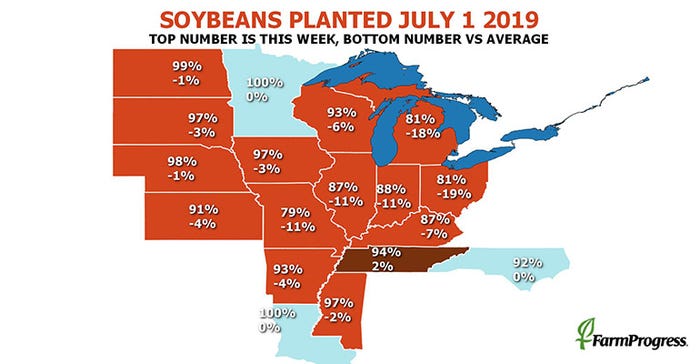
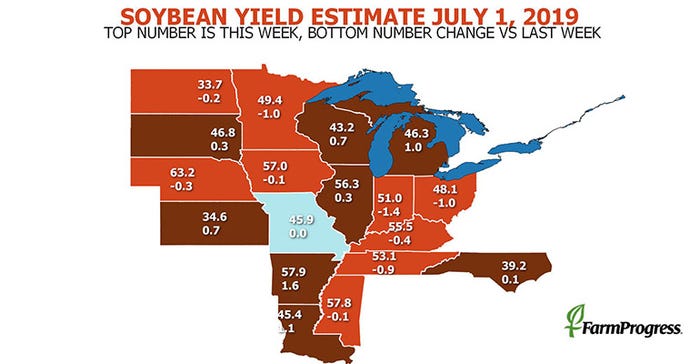
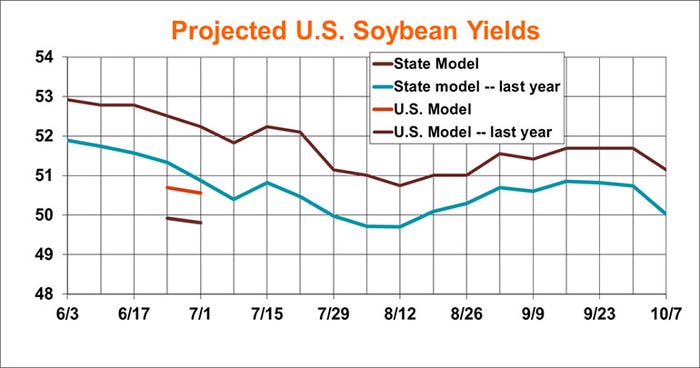
Winter wheat harvest progress doubled from the prior week’s tally of 15% up to 30%, as expected. However, progress overall remains sluggish compared to 2018’s pace of 50% and the five-year average of 48%. Progress on a state-by-state basis varies widely. Six of the top 18 production states have cleared the halfway mark at this point, but seven others have made no measurable progress at this time, according to USDA.
Crop condition is on an upward swing, meantime. Sixty-three percent of the crop is in good-to-excellent condition, up from 61% the prior week. Another 27% of the crop is rated fair (down a point from last week), with the remaining 10% rated poor or very poor (also down a point from last week).
Spring wheat quality held mostly steady last week, with 75% in good-to-excellent condition. Another 21% of the crop is rated fair, with the remaining 4% rated poor or very poor.
Physiologically, 25% of this year’s spring wheat crop is now headed, up from 7% last week but still quite behind 2018’s pace of 55% and the five-year average of 52%.
“Wheat conditions were mixed,” Knorr says. “Spring wheat yield potential declined slightly but winter wheat ticked higher as farmers made a little bit better progress last week thanks to drier weather on the Plains.”
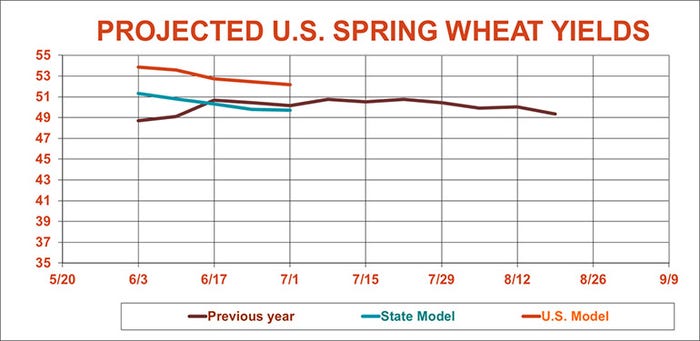
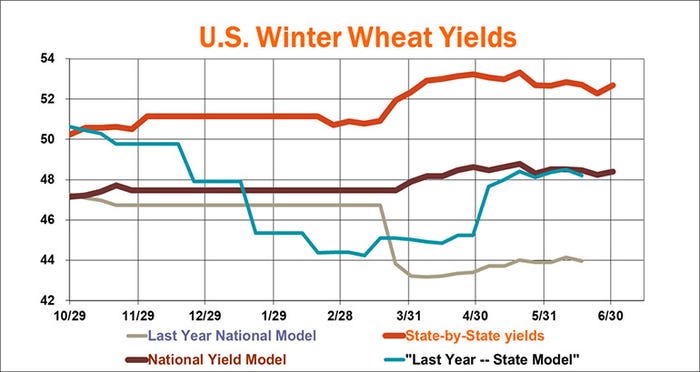
And sorghum planting progress is nearly complete, at 94%. That’s an improvement from last week’s tally of 84% and just behind 2018’s pace of 98% and the five-year average of 96%. Seventy-three percent of the crop is in good-to-excellent condition, up a point from a week ago.
About the Author(s)
You May Also Like





